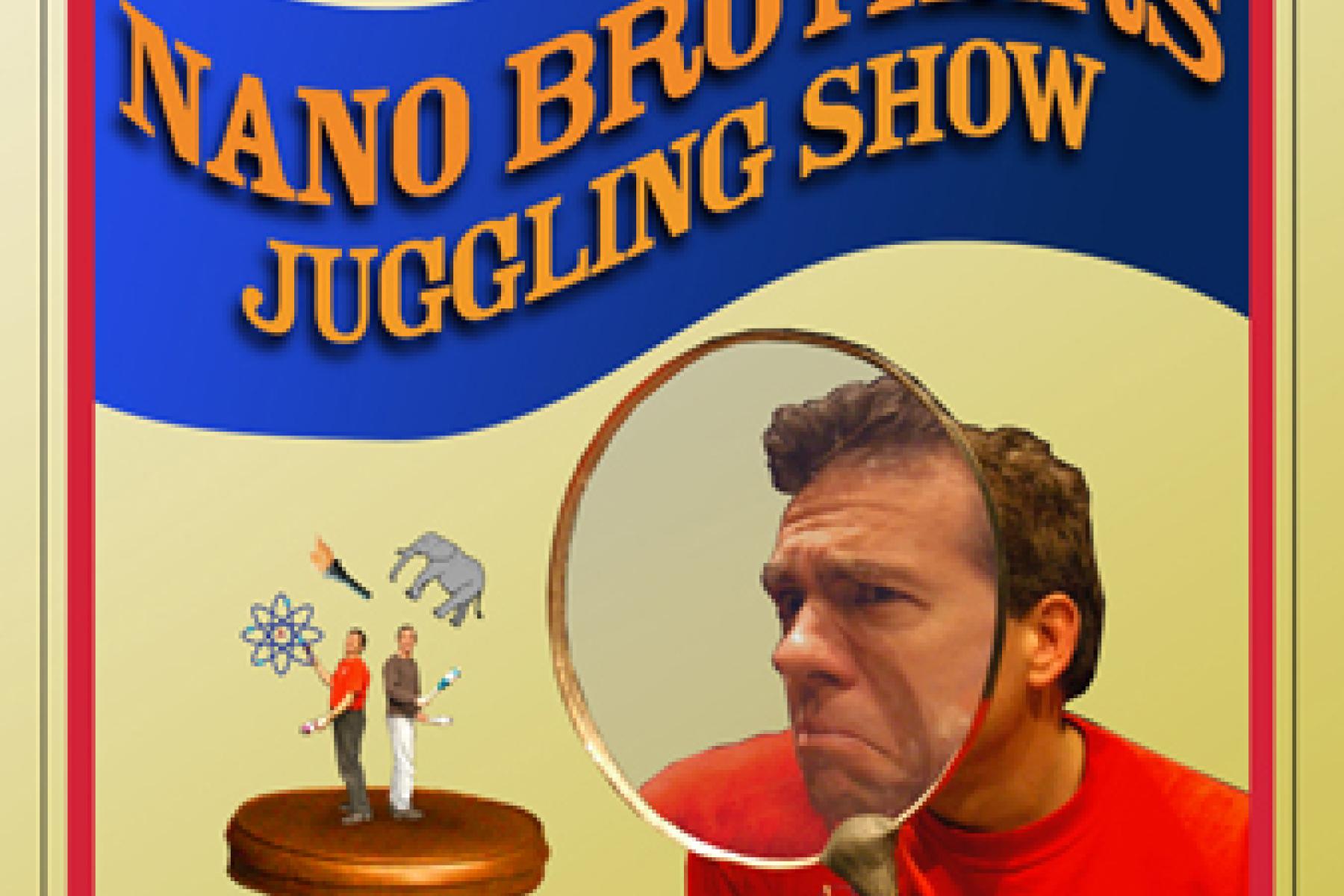DESCRIPTION
A 40-minute live dramatic performance exploring nanoscale science and technology. Dan and Joel are brothers - Dan a know-it-all and Joel a naif - who must deliver a juggling show about atoms, molecules, nanoscale forces and scanning probe microscopy when it is discovered that the scheduled performers - the Nano Brothers - are too small to see. The performance delivers extraordinary visualizations created through juggling, lighting, and large-scale metaphors, and entertains family audiences through character acting, jokes with various levels of sophistication, stunts, and kid volunteer opportunities. The finale has Dan and Joel on 7-foot unicycles juggling various consumer products enhanced with nanotechnology. =
DESCRIPTION
A 40-minute live dramatic performance exploring nanoscale science and technology. Dan and Joel are brothers - Dan a know-it-all and Joel a naif - who must deliver a juggling show about atoms, molecules, nanoscale forces and scanning probe microscopy when it is discovered that the scheduled performers - the Nano Brothers - are too small to see. The performance delivers extraordinary visualizations created through juggling, lighting, and large-scale metaphors, and entertains family audiences through character acting, jokes with various levels of sophistication, stunts, and kid volunteer opportunities. The finale has Dan and Joel on 7-foot unicycles juggling various consumer products enhanced with nanotechnology. =
TRAINING VIDEOS
OBJECTIVES
BIG IDEA
Everything is made of atoms, which are mysteriously composed of mostly empty space, and we are learning how to image and manipulate individual atoms and molecules, harnessing the properties that emerge at their very small size scale in the new fields of nanoscience and nanotechnology.
LEARNING GOALS
The nanoscale world is measured in billionths of meters, and it is too small to see.
Matter behaves differently at the nanoscale, for example, gravity has less significance than the "stickiness" of atoms, smaller bits of material are more reactive than larger bits of the same material. Heat and motion are equivalent.
Atoms are made of electrons zooming around a nucleus and the distance between the outer electrons and the nucleus of an atom is vast. Matter is mostly empty space.
Materials are made of molecules with are made of different combinations of atoms
A scanning probe microscope converts data about the forces of individual atoms to construct images of them.
Don Eigler led the first team to use a scanning probe microscope to not only image but also to move individual atoms. This 1989 event is often considered the birth of nanotechnology.
Nanotechnology is very new, but it is already being used in lots of commercial and consumer products.
Care must be taken with using these new nano-enhanced materials.
It's okay to ask questions and its fun to think about what things are really made of.
NANO CONTENT MAP
Nanometer-sized things are very small, and often behave differently than larger things do.
Scientists and engineers have formed the interdisciplinary field of nanotechnology by investigating properties and manipulating matter at the nanoscale.
Nanoscience, nanotechnology, and nanoengineering lead to new knowledge and innovations that weren't possible before.
Nanotechnologies—and their costs, utility, risks, and benefits—are closely interconnected with society and with our values.
Credits
Museum of Science, Boston
Supported by the National Science Foundation and the Massachusetts Technology Collaborative through the Center for High-rate Nanomanufacturing (EEC-0425826 and EEC-0832785) and the Harvard Nanoscale Science and Engineering Center (PHY06-46094).
This linked product was created by another institution (not by the NISE Network). Contact owning institution regarding rights and permissions.


